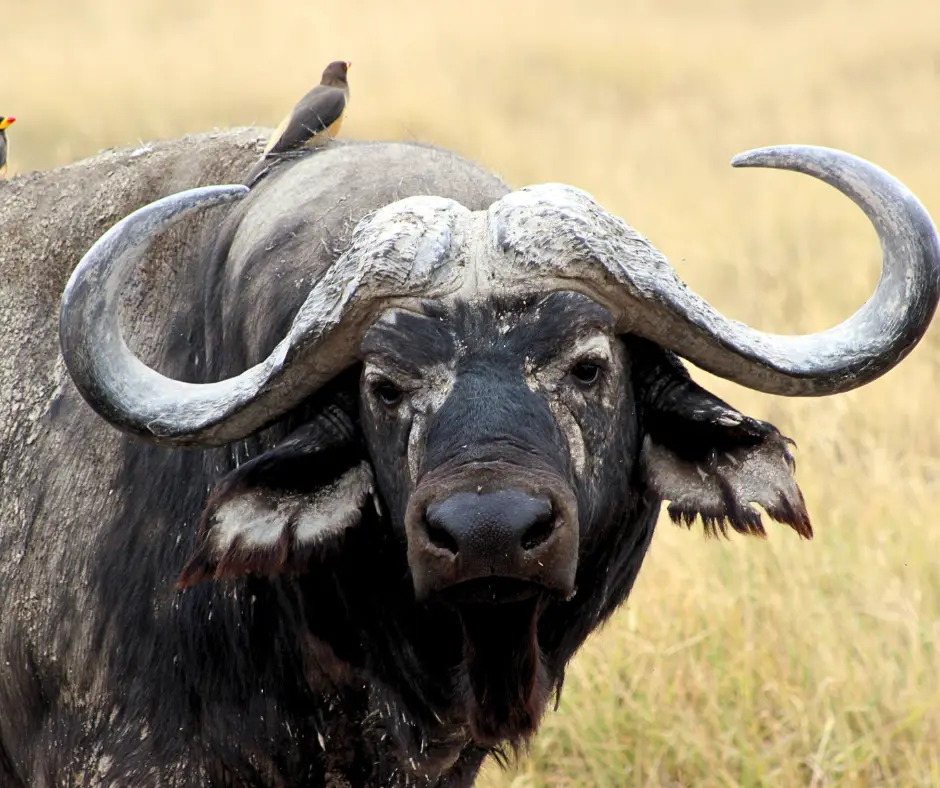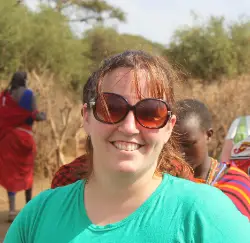The Best Time to Visit Kenya: A Month by Month Guide
Kenya, Africa / March 11, 2025 / Be the first to comment
Imagine witnessing the majestic wildlife of Kenya in their natural habitat, surrounded by stunning landscapes and vibrant cultures. Kenya is famous for its rich biodiversity and incredible safari experiences, making it a top travel destination for adventurers and animal lovers alike. From the Great Migration to the big five safari animals, Kenya has a variety of wildlife that call it home. However, the best time to explore this African gem can vary greatly throughout the year.
Kenya boasts a unique climate with distinct wet and dry seasons that greatly influence wildlife activity and the overall safari experience. From the breathtaking Great Migration to the serene wildlife retreats along the coastline, understanding the seasonal changes is key to planning an unforgettable trip. Each month offers different opportunities for wildlife viewing, making a month-by-month guide essential for potential visitors.
Honestly, the best time to visit Kenya is whenever you go – remember seeing something even in the off-season is better than not seeing it at all. However, if you’re looking for a better time to go, then this guide may help you depending on your interest & budget. I’ve done safaris with Sunworld Safari and Africa Adventure Vacations – feel free to contact me and we can plan your dream Africa safari!
This post contains affiliate links. This means if you purchase something from a link, I may make a small commission, at no cost to you. This helps me keep the site running and free.
If you like this post, be sure to sign up for my e-mail list for travel inspiration (and get your FREE budget printable), or connect with me on Facebook, Instagram, Twitter, or Pinterest.
Understanding Kenya’s Climate and Seasons
Kenya experiences two main dry seasons: December to March and July to October. These periods, known as the country’s summer and winter, respectively, offer excellent conditions for travel. January is particularly dry, making it an ideal time for tourists. Wildlife viewing is optimal from June to October, as this is when the Great Migration occurs. Millions of wildebeest migrate from Tanzania’s Serengeti to Kenya’s Masai Mara during this period.
The rainy seasons in Kenya include a longer rainy season from April to June and a shorter one from November to mid-December. During these wet seasons, heavy rains can impact travel conditions, but they also bring lush landscapes. Despite being near the equator, Kenya’s weather is generally warm year-round, with variations in rainfall and temperature due to altitude.
For those interested in wildlife, visiting during the dry season ensures excellent game viewing opportunities. Amboseli National Park and the Samburu National Reserve and other safari parks in Kenya are particularly popular during this time. Each season in Kenya offers unique experiences, so planning your visit around these climate patterns can greatly enhance your trip.
Best Months for Wildlife Viewing
January: New Year Safaris and Wildlife Activity
January in Kenya features warm, dry conditions with temperatures averaging around 28°C (82°F). It is a bustling month for tourism, ideal for witnessing vibrant wildlife, including newborn animals in regions like the Masai Mara. Alongside game drives, coastal areas like Mombasa offer superb diving and snorkeling. Be prepared for crowded parks and higher accommodation prices as the holiday season draws in more visitors.
February: The Peaks of Wildlife Sightings
February brings excellent wildlife viewing due to the presence of young herbivores from the previous year’s migration. Masai Mara and Samburu National Reserve are hotspots for spotting giraffes, zebras, big cats, and elephants. February’s warm temperatures, around 29°C (84°F), support outdoor adventures. Fewer tourists compared to January make it an ideal time for both beach and safari activities, but early bookings are recommended.

March: Start of the Rain
March showcases Kenya’s transition from dry to more rainy conditions. While experiencing increased rainfall, the absence of large crowds offers quiet and serene safari opportunities. Lodges offer lower prices as they prepare for the coming rains, while cultural enthusiasts can enjoy the East African Art Festival in Nairobi. There is still abundant wildlife that calls Kenya home even with rain. During the wet season, clouds may impact your view of Mount Kilimanjaro. March sets the stage for Kenya’s peak rainfall season in April.

April: Transition to the Wet Season
April stands as one of the wettest months, marked by heavy rains and high humidity, averaging around 230 mm of rainfall. While lush landscapes make wildlife spotting harder, fewer tourists mean reduced prices and more intimate experiences. Be aware that some lodges may close due to severe weather. Despite challenging conditions, April remains cost-effective for adventurous travelers.

May: The Long Rains Begin
May experiences the height of Kenya’s rainy season with heavy, extended downpours. Wildlife sightings diminish due to dense vegetation, and numerous lodges close, impacting accommodations. High rainfall and over 80% humidity can lead to last-minute safari cancellations. Traveling becomes challenging, and visitors may face muddy terrains, making May less conducive for safaris. This is probably the one month you don’t want to visit Kenya in if you can avoid it.
June: Drying Conditions and Wildlife Migration
June marks the transition from rain to dry season, with a notable decrease in rainfall. You may have some light showers, but overall it’s a beautiful time to visit Kenya. This change significantly improves wildlife visibility as animals move in search of water and vegetation thins. The initial phase of the Great Migration starts, drawing herds to the Masai Mara. At the start of the summer season, herds of wildebeest start the trek between Kenya and Tanzania for water. Zebra join them and of course, predators follow the prey. While some safari lodges offer lower pre-peak prices, most lodges reopen, allowing for vibrant post-rain experiences.

July: The Great Migration Peaks
July is a spectacular month in Kenya as millions of wildebeests migrate across the Masai Mara. It’s one of the driest months in Kenya. Observing these herds becomes a breathtaking experience, while predators like big cats add thrill to safaris. July is the best time to witness dramatic river crossings. Wildebeests cross the dangerous Masai River to find food. Be sure to book in advance as safaris can fill up. For a birds eye view, go on a hot air balloon ride over the Masai Mara.
August: Wildlife Viewing at its Best
August is arguably the best month for wildlife viewing, coinciding with the peak of the Great Migration (and thus peak tourist season). Dry, mild temperatures, ranging from 20°C to 23°C (68°F to 73°F), enhance outdoor exploits. Large tourist crowds and increased prices characterize this month, yet the extraordinary wildlife sightings in national parks compensate with rewarding experiences. This is when I visited Keya and we had a fantastic time visiting a number of safari parks and witnessing plenty of wildlife.

September: Mild Weather and Exciting Safaris
September brings mild weather and a continuation of fabulous wildlife viewing, including the tail-end of the Great Migration in the Masai Mara. Encounters with a variety of animals are common, owing to the high concentration on plains. As crowds begin to thin late in the month, accommodation prices slightly decrease. Outdoor enthusiasts can also enjoy lively cultural festivals like JAMAFEST.

October: The Start of the Short Rains
October marks the onset of the short rainy season, rejuvenating Kenya’s landscape. The afternoon occasional shower allow for regular safari activities and help to lower tourist prices, benefiting budget travelers. Although the Great Migration herds move toward Tanzania, resident wildlife remains abundant, continuing to create great safari opportunities. Remember, not all wildlife is migratory!

November: Bird Watching and Rainy Safaris
Kenya’s landscape prospers under November’s short, intense rains, making it a prime month for bird watching. Northern and central regions, including Nairobi, experience rain-induced high temperatures, while the southern coast remains humid. Although slippery roads may occur, November offers fewer crowds and lower accommodation rates, establishing a low tourist season with gratifying wildlife viewing. Be sure to include a stop at Lake Nakuru and Lake Naivasha to see a lot of migratory bird species.
December: Festive Safaris and Wildlife Activity
December greets visitors with lush, vibrant scenery thanks to the ongoing short rains, facilitating rich wildlife viewing. Warmer temperatures, between 24°C and 29°C (75°F to 84°F), provide a delightful environment for outdoor activities. Embodying the festive spirit are cultural events like the Rusinga Cultural Festival and Beneath the Baobabs Festival, while birdwatchers enjoy abundant resident and migratory species. December is the best time to visit Kenya to experience diverse wildlife amidst flourishing foliage.

The Best Time for Beach Holidays
The best time for beach holidays along Kenya’s Indian Ocean coastline is during the dry season, particularly from June to October. During this period, visitors can enjoy both beach and safari experiences. The warm Indian Ocean waters remain consistent throughout the year, providing a tropical environment for beachgoers.
Kenya’s coastal regions are hot and humid year-round, making beaches accessible at any time. January is also a great time for a beach holiday in Kenya, featuring mostly dry weather and a pleasant climate ideal for outdoor activities. Although rain can happen anytime, the months around the dry season see the most visitors, aligning with the peak tourism season for safaris.
Tips for Planning Your Kenyan Safari
Planning a Kenyan safari requires careful consideration of timing and conditions. The peak safari season runs from July to September and December to February, aligning with Kenya’s dry seasons. This period offers the best conditions for wildlife viewing and photography, especially if you visit the Masai Mara in January. It’s advised to bring layers, as evenings can be cold.
February is exceptionally dry, making it an excellent time to explore the safari destinations, as dry soil ensures smooth access to savannahs. June to October is also an ideal time, especially early September, to witness the majestic wildebeest migration. During this time, millions of wildebeest and other herbivores move across the plains.
For a successful safari, ensure to plan according to these months and align your visit with the goals of your safari experience, be it game viewing, photography, or witnessing river crossings. Always check the weather closer to your travel dates to pack appropriately and maximize your experience in Kenya’s stunning national parks.
Key Questions About Wildlife Expectations
What wildlife can you expect to see?
Kenya is a renowned destination for wildlife enthusiasts. You can expect to see a diverse range of animals, including the big five safari animals: lions, elephants, buffalo, leopards, and rhinoceroses. Beyond these, the Kenyan plains are populated with cheetahs, giraffes, zebras, hippos, and Nile crocodiles. Birdwatchers will find Kenya particularly rewarding, especially between November and December when the variety of resident birds is impressive.
The Great Migration is a spectacular event where over 1.2 million wildebeest move from Serengeti National Park to Kenya’s Masai Mara, typically occurring from July to October. This period, characterized by the dry season, is considered the best time for wildlife viewing as animals cluster around scarce water sources. Even during the rainy season from March to May, opportunities exist to see unique wildlife behavior as animals gather around fewer watering holes.
Besides the iconic big five, expect to see cheetahs, giraffes, zebras, hippos, and Nile crocodiles. Bird enthusiasts will particularly enjoy the increase in bird populations between November and December. Even during the rainy season from March to May, there are opportunities to observe unique behaviors as some animals gather around diminishing water sources. Towards the end of the year, many animals give birth, providing a unique opportunity to witness newborns in the wild.

How to prepare for a safari experience?
When preparing for a safari in Kenya, comfort is key. Pack casual safari wear, suitable for both warm days and chilly evenings; warm sweaters are a must. If you plan to embark on walking safaris, comfortable sports or trekking shoes are advised. Ensure your packing list includes essentials like warm clothes, a fleece or light wool sweater, socks, sunglasses, high-factor sunscreen, and a brimmed sun hat. If your safari involves climbing, pack suitable clothing and footwear. Remember to plan your trip well in advance, ideally booking accommodations and itineraries at least three months before your travel dates. If you’re booking with a safari company, they’ll often provide a packing list making sure that you’re prepared.
Final Thoughts
Kenya, with its breathtaking landscapes and rich biodiversity, offers an unforgettable adventure for every traveler. Whether you choose to immerse yourself in the vibrant wildlife during the peak season from July to October or prefer the lush green scenery accompanied by unique animal behaviors during the rainy season, each month presents its own charm and opportunities for exploration. By understanding the seasonal variations and preparing adequately for your safari experience, you can ensure that your trip to Kenya is both enjoyable and enriching.
About the Author














Leave a Reply